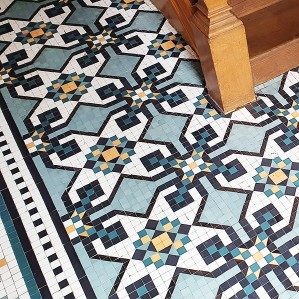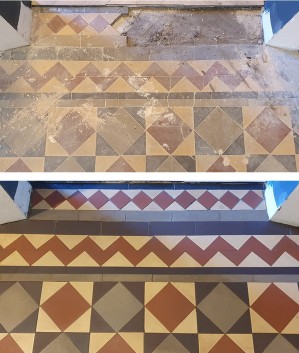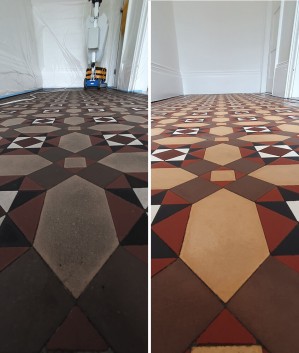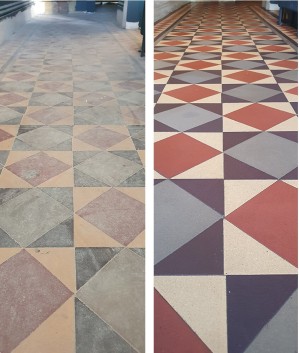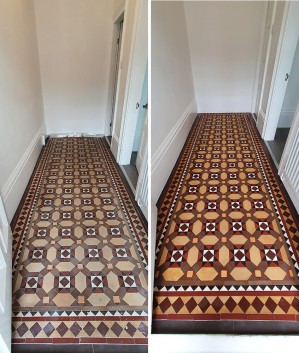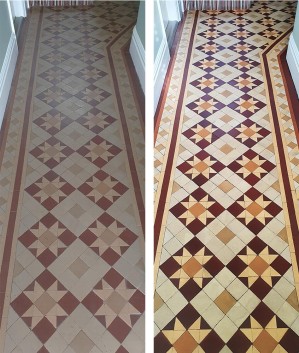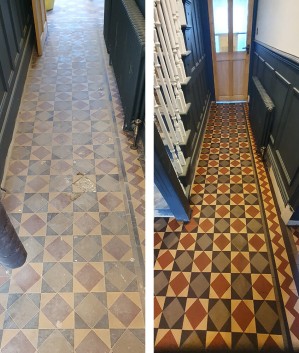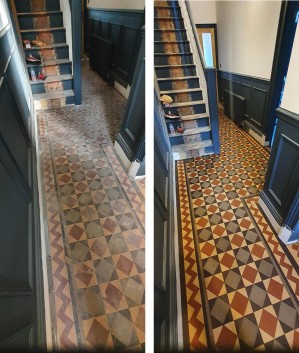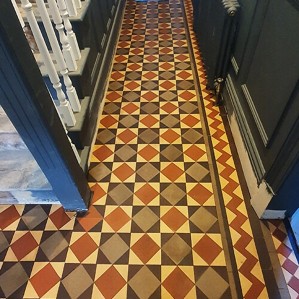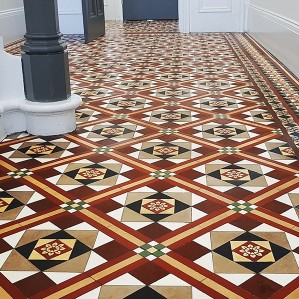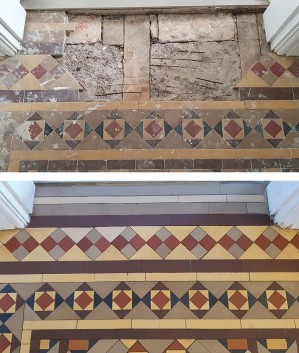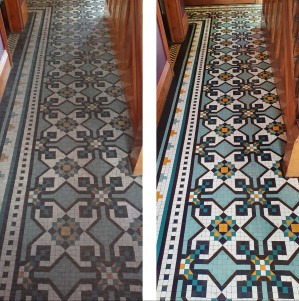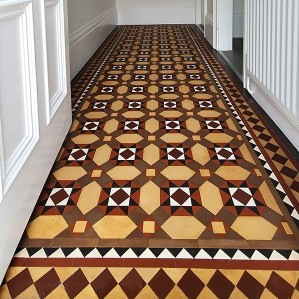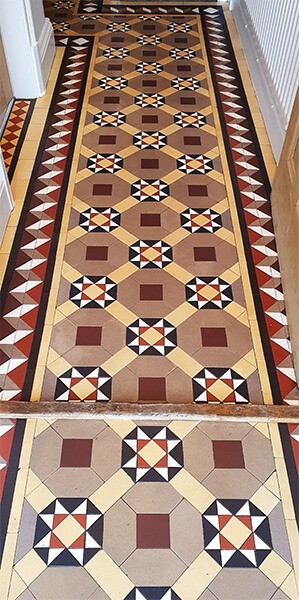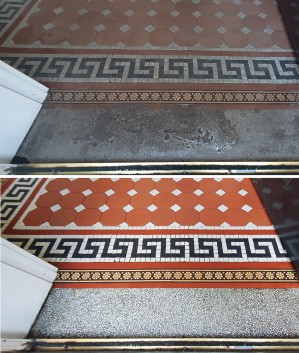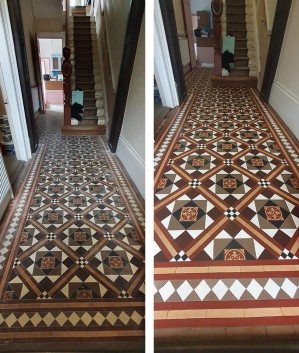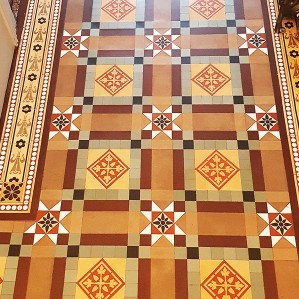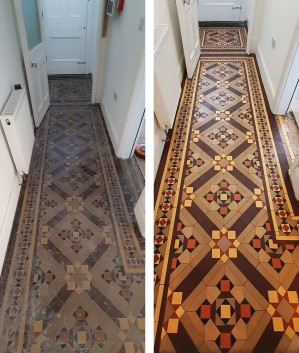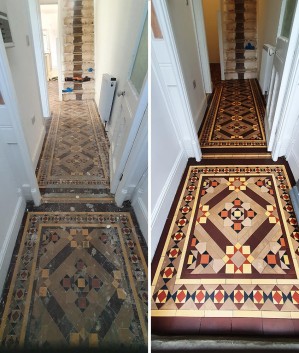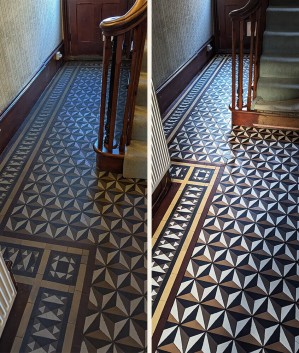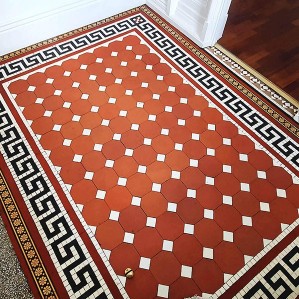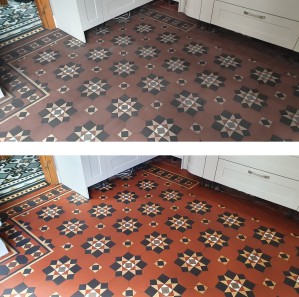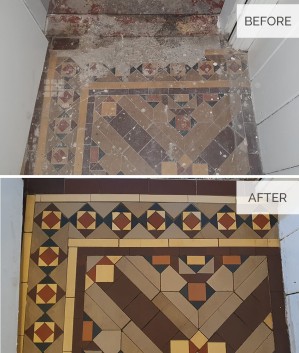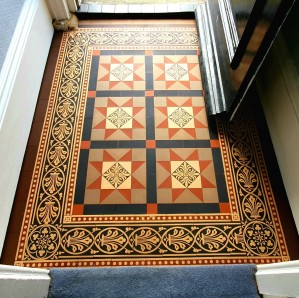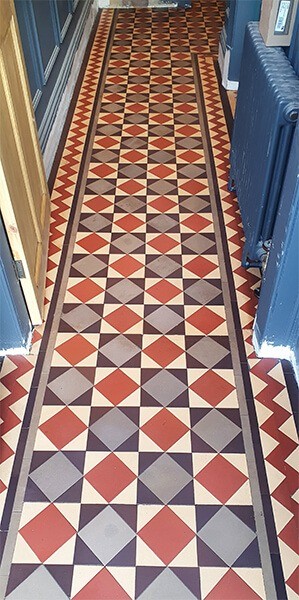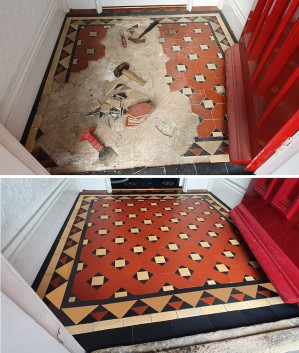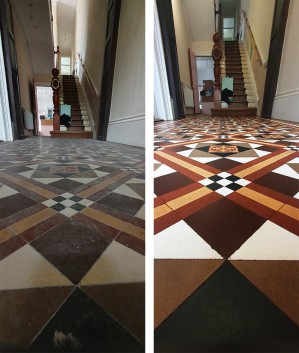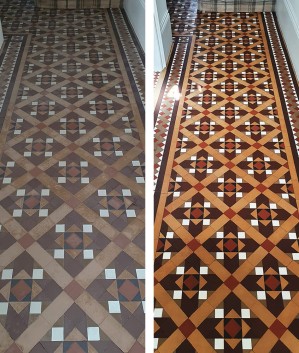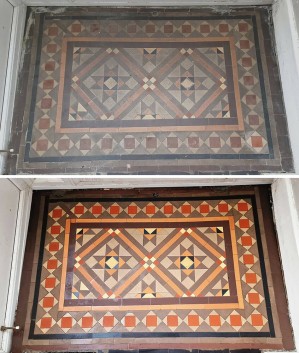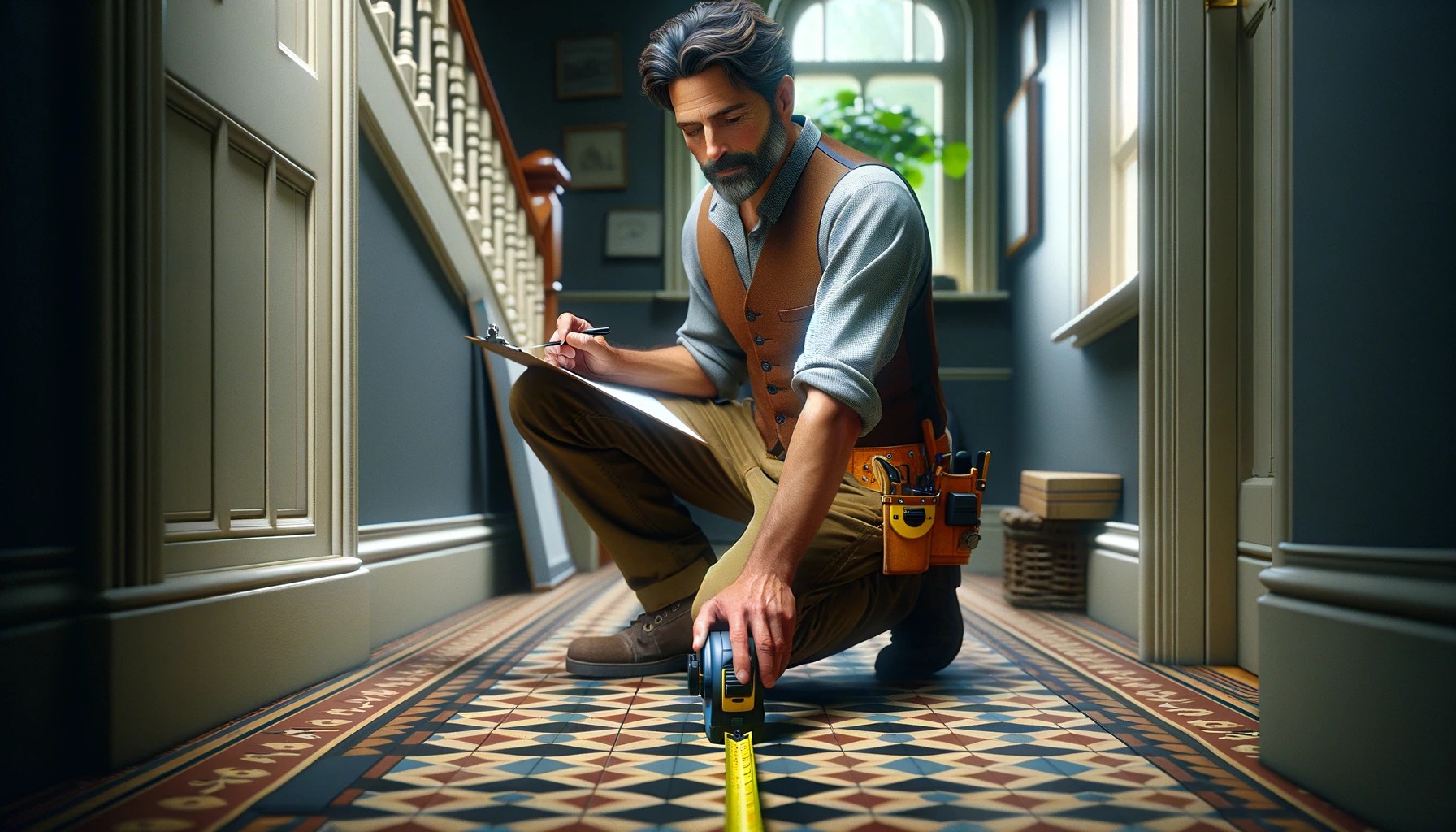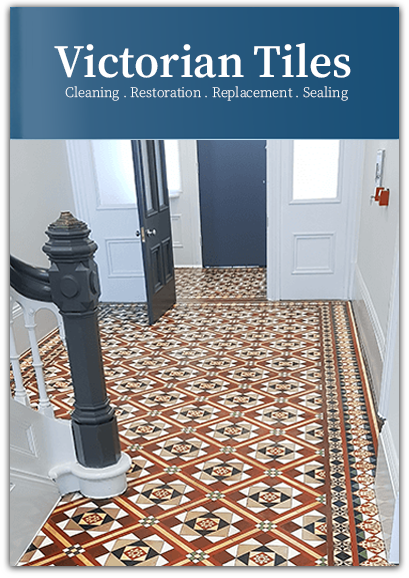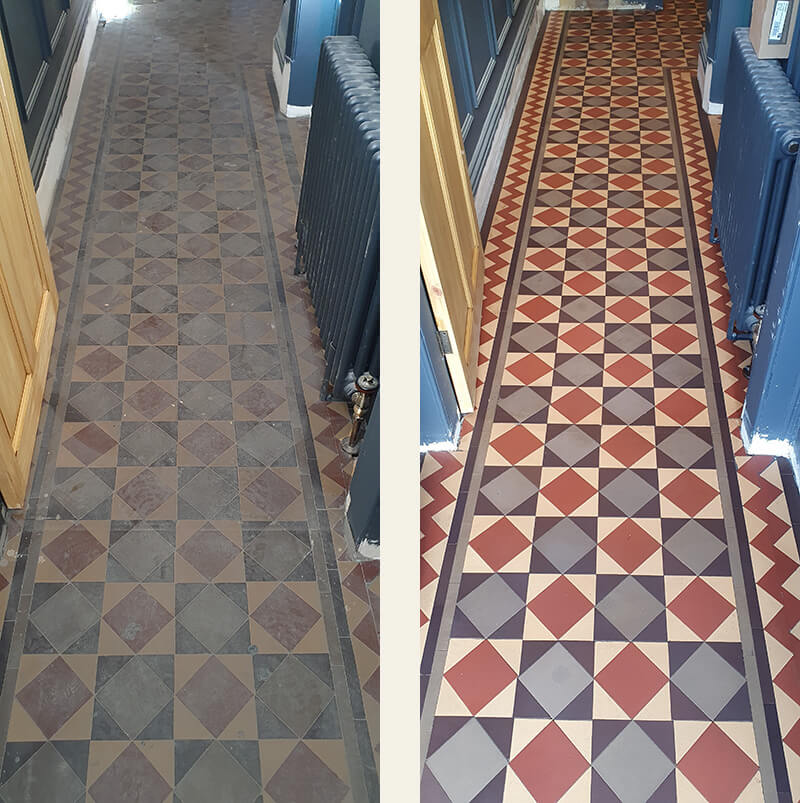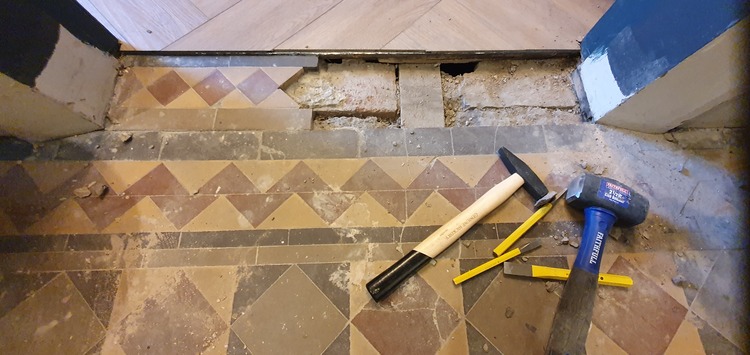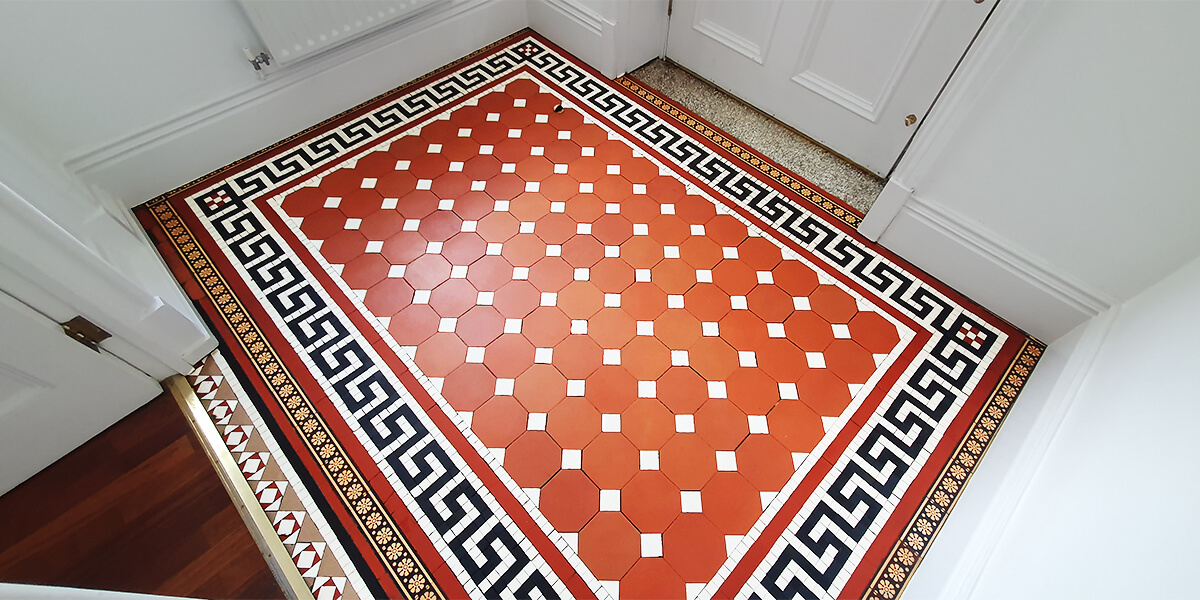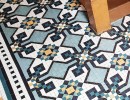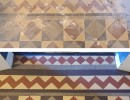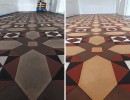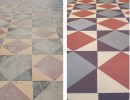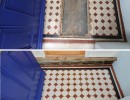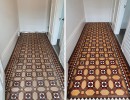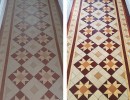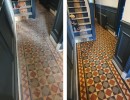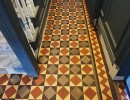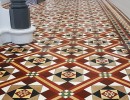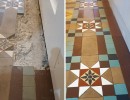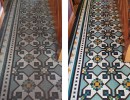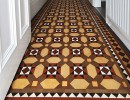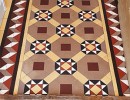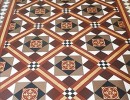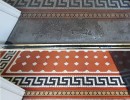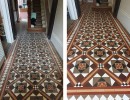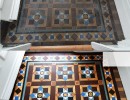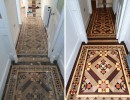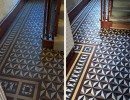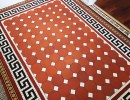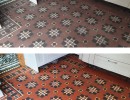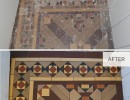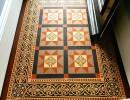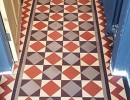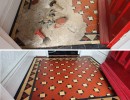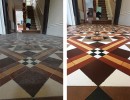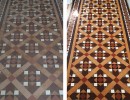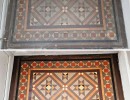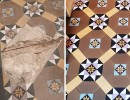Avoiding Disaster: Common Mistakes in Restoring Victorian Tiled Floors
Imagine stepping back in time, walking across a beautifully patterned Victorian tiled floor that whispers tales from over a century ago.
These floors, with their intricate designs and vibrant colours, not only add a touch of elegance to any home but also bear witness to the rich history and craftsmanship of the Victorian era. However, the journey to restore these historical masterpieces to their original glory is fraught with challenges. Without the right knowledge and care, what starts as a mission to preserve can quickly turn into a disaster, leading to damaged tiles, lost patterns, and the erasure of history beneath our feet. This guide aims to navigate the treacherous waters of restoration, highlighting common mistakes to avoid and ensuring your Victorian tiled floor can continue to tell its story for generations to come.
Read
Table of Contents
Understanding Victorian Tiled Floors
The Historical Significance
Victorian tiled floors were not just about aesthetics; they were a statement of class, elegance, and technological advancement during the Victorian era. Made from Encaustic clay tiles, these floors were renowned for their durability, intricate patterns, and the ability to retain colour over decades. Each pattern told a story, each colour choice a glimpse into the preferences of the era, making the restoration of these floors not just a renovation task but a preservation of cultural heritage.
Characteristics Worth Preserving
The unique charm of Victorian tiles lies in their geometric patterns, floral designs, and the meticulous attention to detail evident in each tile. Restoring these floors means maintaining the integrity of these designs while ensuring the tiles continue to withstand the test of time. It's a delicate balance between preserving the original craftsmanship and integrating modern restoration techniques.
The Importance of Professional Restoration
Tackling a Victorian floor restoration project is not for the faint-hearted. The complexity of these floors requires a nuanced understanding of historic materials, techniques, and the common pitfalls that can turn a restoration project into a restoration disaster.
Expertise Over Enthusiasm
While enthusiasm for DIY projects is commendable, Victorian tiled floors demand a level of expertise that goes beyond the average DIY skill set, often leading to frequent errors when attempted by amateurs. Professional restorers bring not just the necessary skills to the table but also an understanding of the historical significance of these floors. They can identify original materials, match patterns and colours with historical accuracy, and employ restoration techniques that ensure the longevity of the floor.
Victorian Tile Restoration Tips: Get the DIY Masterclass eBook!
Download our tailored DIY eBook, complete with tools and materials list. Your essential companion, offering step-by-step instructions and expert advice for a manageable Victorian tile project. Don't miss out – make your task a breeze with our eBook!
This guide is vital for your restoration journey, ensuring you meet all the tiles' needs. It's an essential resource for selecting the right tools, offering expert advice on recommended materials and much more. This preparation equips you to breathe new life into these timeless artefacts.
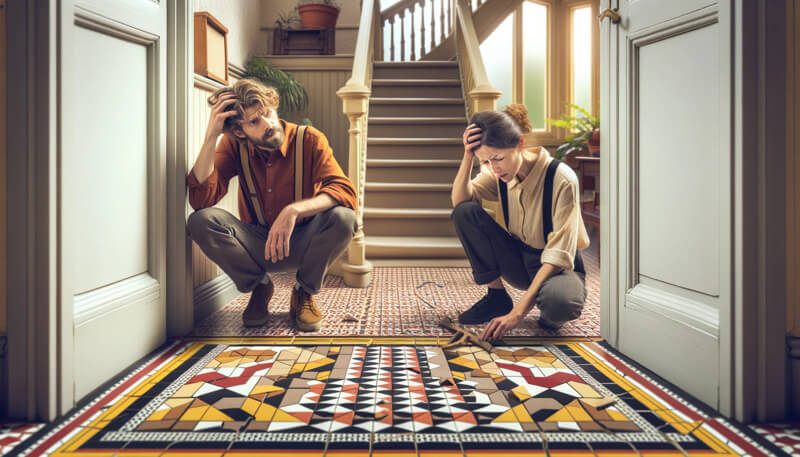
Common Mistakes to Avoid in Restoration
Underestimating the Project's Complexity
One of the first mistakes many homeowners make is underestimating the complexity of restoring Victorian tiled floors. It's not just about cleaning and replacing broken tiles; it involves understanding the original installation methods, materials used, and how to replicate these in a way that is both authentic and durable.
Using Incorrect Cleaning Agents
Perhaps the most common and easily avoidable mistake is using harsh chemicals or inappropriate cleaning methods that can damage the tiles' surface. Victorian tiles require gentle cleaning agents and techniques that remove dirt and grime without compromising the tile's integrity.
Overlooking Underlying Problems
Ignoring the Foundation
Before any aesthetic work begins, it's crucial to assess the floor's foundation. Problems like dampness, subfloor damage, or uneven surfaces can undermine the entire restoration effort. Failure to address these issues can lead to tiles lifting, cracking, or "tenting" after they've been laid down. A professional restorer will always start with a thorough examination of the floor's structure, ensuring any underlying issues are resolved before proceeding with the restoration.
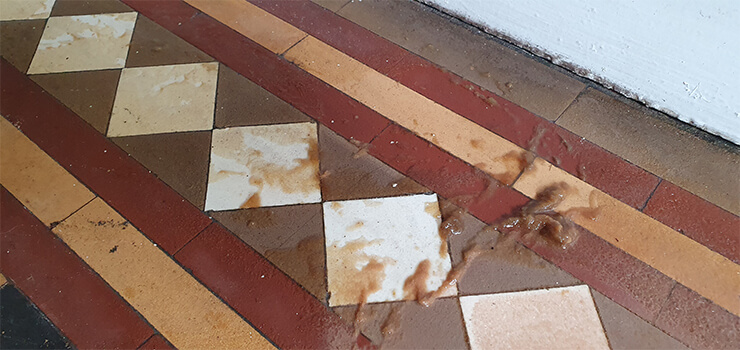
Mismatched Tiles
The Challenge of Authenticity
Finding replacement tiles that match the original design and colour can be a daunting task. Modern replicas often lack the depth and variation of the originals, leading to a patchwork effect that diminishes the floor's overall aesthetic. Professionals specialising in Victorian floor restoration usually have access to vintage tiles or bespoke reproduction services that ensure a seamless match.
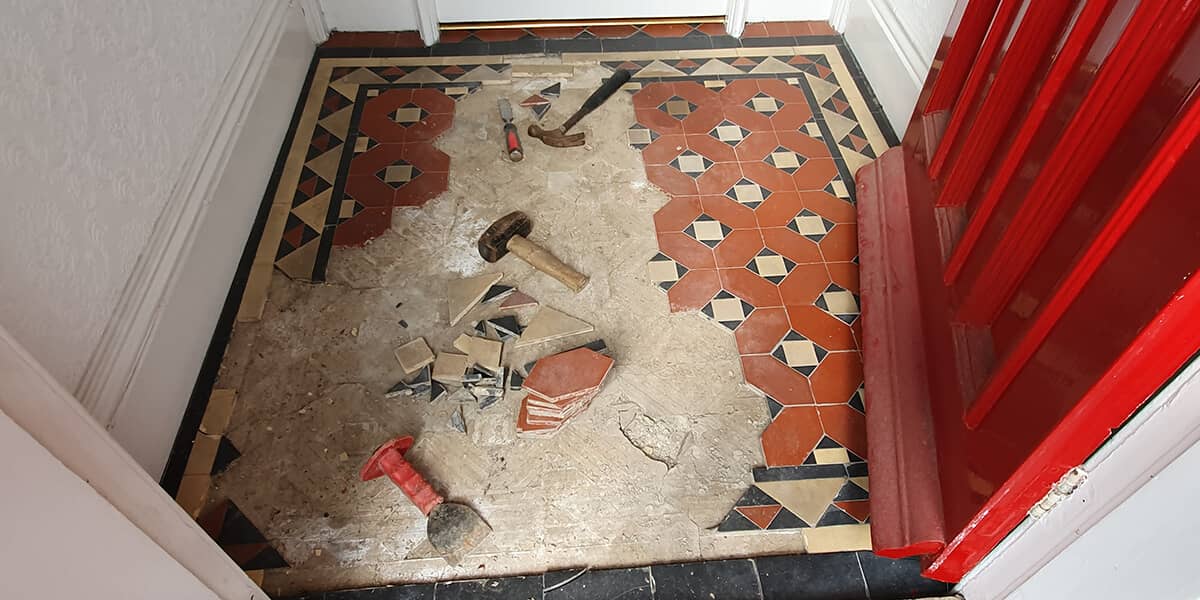
Improper Sealing
Protecting the Past
After cleaning and repairing the Victorian tiles, sealing is the final step to protect the floor from stains, moisture, and wear. However, using the wrong sealant or applying it incorrectly can trap moisture beneath the surface or leave the tiles looking dull and lifeless. The choice of sealant—whether it's enhancing, colourless, or matte—should complement the tiles' natural beauty without compromising their durability. This step is crucial in maintaining the floor's restored condition and extending its lifespan.

DIY restoration Pitfalls
While the allure of tackling a restoration project on your own can be strong, Victorian tiled floors present unique challenges that often require professional expertise.
The Risk of Overconfidence
Many DIY enthusiasts dive into restoration with confidence, only to find themselves outmatched by the task's intricacies. Whether it's failing to identify the type of tile, using modern adhesives that don't mesh well with old substrates, or applying sealants unevenly, the margin for error is slim. The section on DIY restoration pitfalls within the article would delve into these common errors in detail, offering cautionary tales and emphasising the value of professional assessment and intervention.
Choosing the Right Professional
This crucial section of the article would outline the steps homeowners should take to ensure they select a restoration professional with the right experience and credentials.
Research and Recommendations
Start by researching local specialists with experience in Victorian and heritage tiles. Look for reviews, before-and-after photos, and testimonials from previous clients. Recommendations from trusted sources can also guide you to reliable professionals.
Questions to Ask
Before hiring a restorer, ask about their experience with Victorian floors, the techniques they use, and their approach to matching tiles. Inquire about insurance, guarantees, and how they plan to address any underlying structural issues. This dialogue will give you a sense of their expertise and commitment to quality.
Understanding Estimates
Comprehensive Estimates should outline the scope of work, materials, timelines, and costs. Transparency about potential challenges and how unforeseen issues will be handled is essential to avoid surprises.
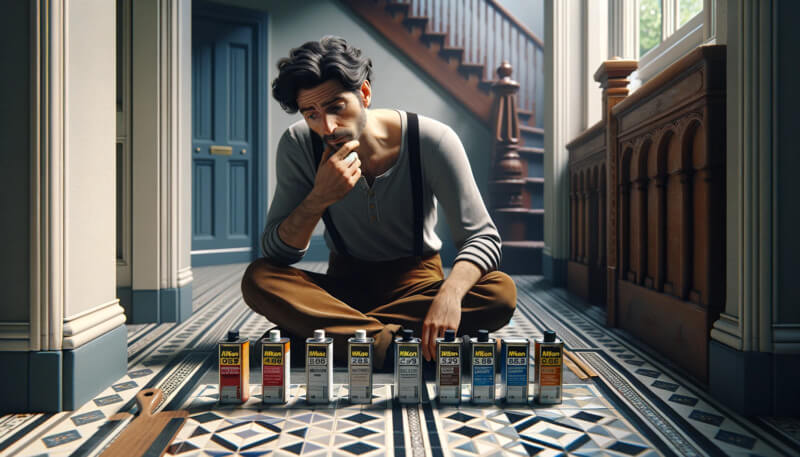
In contrast, indoor tiles might need a sealant that offers protection against spills and foot traffic, while also being compatible with the tile's material and finish. It's not just about applying a protective layer; it’s about tailoring this protection to the tile's environment, ensuring that it remains effective over time.
The restoration process: Step by Step
A professional restoration follows a meticulous process, from initial assessment to the final touches.
Initial Assessment and Planning
This stage involves examining the floor's condition, identifying the type of tiles, and planning the restoration workflow. It's about understanding what you're working with and how best to proceed to achieve optimal results.
Cleaning and Repairing the Floor
Professionals use gentle, effective cleaning methods to remove years of dirt without damaging the tiles. Repairing involves not just replacing broken tiles but also re-affixing loose ones and filling in missing grout with colour-matched materials.
Replacing Damaged Tiles
Sourcing matching tiles is a task that professionals handle with care, ensuring that new or reclaimed tiles blend seamlessly with the original ones.

Sealing and Finishing Touches
The right sealant applied correctly will protect the floor and enhance its beauty, marking the culmination of the restoration process.
Maintenance Tips Post-Restoration
Maintaining a restored Victorian tiled floor involves regular cleaning with gentle products, immediate spill cleanup to prevent staining, and periodic professional check-ups to address any emerging issues before they become problems.
Conclusion
Restoring a Victorian tiled floor is a journey through history, requiring respect for the craftsmanship of the past and a commitment to preserving it for the future. By avoiding common mistakes and entrusting this delicate task to professionals, homeowners can ensure their Victorian floors remain a vibrant link to a bygone era, enhancing their homes with beauty and history for many years to come.
FAQs
Can I restore Victorian tiled floors myself?
Answer: While DIY restoration of Victorian tiled floors is possible, it requires a deep understanding of the specific materials and techniques. Common pitfalls include using incorrect cleaning agents and failing to address underlying structural issues. For best results, consulting a professional is advised, especially for complex or heavily damaged floors.
How do I find the right professional for restoring my Victorian tiled floor?
Answer: Look for a restorer with experience in Victorian and heritage floors. Check their portfolio for before-and-after photos, ask for testimonials from previous clients, and ensure they have a clear understanding of matching historical patterns and materials. Additionally, ensure they provide a detailed Estimate that outlines the scope of work and costs.
What are the most common mistakes made during Victorian tiled floor restoration?
Answer: Common mistakes include underestimating the complexity of the project, using harsh chemicals that can damage the tiles, failing to properly assess and fix underlying floor issues, mismatching replacement tiles, and applying the wrong type of sealant. These errors can lead to further damage and may compromise the floor's integrity and appearance.
How much does it typically cost to restore a Victorian tiled floor?
Answer: The cost of restoring a Victorian tiled floor varies widely depending on the floor's condition, the extent of damage, the cost of matching tiles, and the specific services required (e.g., cleaning, repair, replacement, sealing). It's essential to get a detailed Estimate from a restoration specialist to understand the full scope and cost of the project.
How can I maintain my Victorian tiled floor after restoration?
Answer: Regular maintenance is crucial to preserving the beauty of your restored Victorian tiled floor. Use gentle, pH-neutral cleaning solutions, avoid abrasive scrubbing tools, immediately clean up spills to prevent staining, and consider applying a sealant every few years to protect the tiles from wear and moisture.
Valuation Estimator
Discover the Untapped Wealth Beneath Your Feet!
Have you ever pondered the concealed fortune nestled within your period floor? Join us on a voyage of revelation as we unearth the concealed worth beneath your very feet.
Presented below is a striking case study of a meticulously restored floor, showcasing its valuation both before and after restoration.
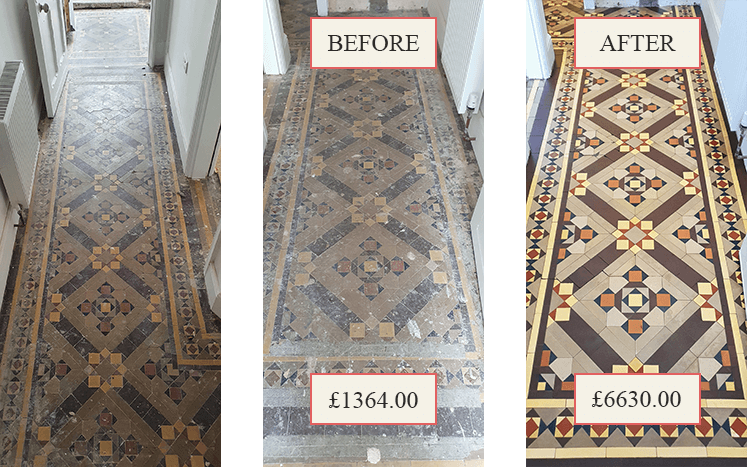
Floor Valuation Estimator
Please ensure precise measurement of the entire floor rather than a specific section, as this can significantly impact the estimate, ranging from £100 to £1000's.
Please be aware that this tool is a floor valuation estimator, and does not provide a price for professional Victorian tiled floor restoration. The calculation utilised by this valuation estimator uses the following formula: Value = (Colour Factor + Design Factor + Condition Factor + Historical Data & Market Trends Factor) × Base Value.
Having unveiled the intrinsic value of your flooring
it's time to take the next step and explore the costs associated with floor restoration. Obtain your complimentary survey and estimate today!Reach Out …
Gallery - Our Work
A Small Selection of Our Work
